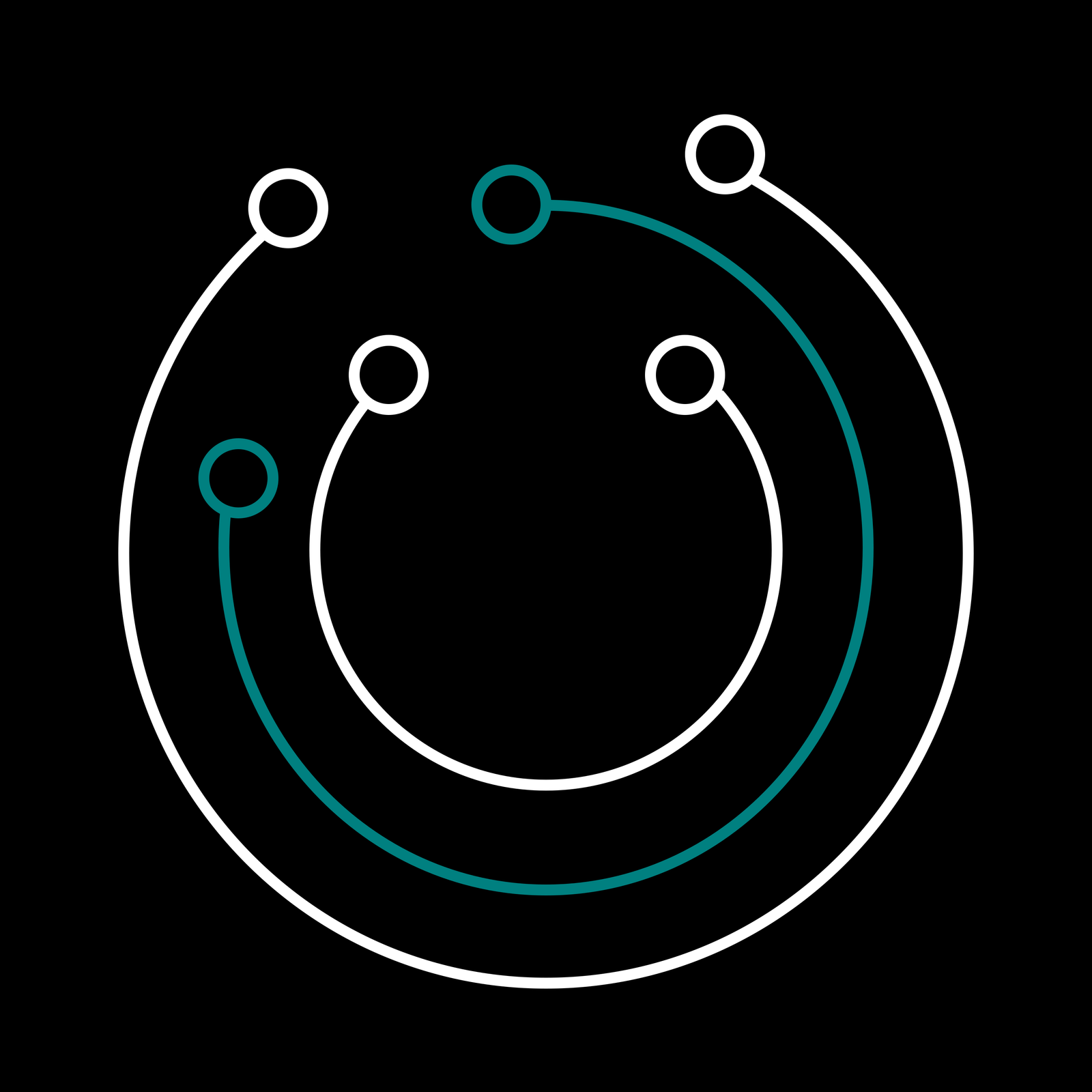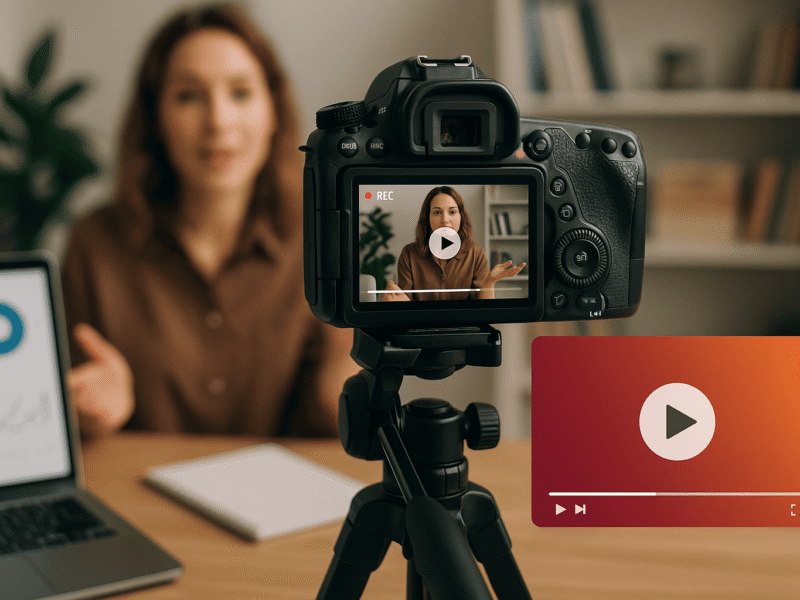Today’s digital landscape is a crowded battlefield. With more than 500 hours of video uploaded to YouTube every minute, and users scrolling past hundreds of ads daily on social media, grabbing consumer attention has become harder than ever. For brands, this challenge presents a critical question:
How can you rise above the noise and form an emotional, lasting connection with your audience?
Enter: Video marketing.
This form of content marketing isn’t just thriving—it’s dominating. Video is now the most powerful medium for storytelling, engagement, and trust-building. Data proves it: According to HubSpot’s 2024 Marketing Trends Report, 91% of marketers have adopted video as a core part of their strategy, and 87% say it’s generated a positive return on investment. Even more compelling, 96% of people say they’ve watched an explainer video to learn more about a product or service—proof that video is influencing real buying decisions.
But here’s the catch: poorly executed video content can do more harm than good. That’s why brands need to approach video not just as creative content but as a strategic business asset.
This comprehensive guide by TDC breaks down the art – and the science – of making compelling marketing videos that capture minds and convert leads into loyal customers. Whether you’re a beginner bootstrapping your way through Instagram Reels, or a seasoned marketer refining your YouTube funnel, there’s gold in here for you.
1. Why Video Marketing Is Non-Negotiable in 2024
Consumers today are wired for video. With Gen Z and Millennials spending more than four hours daily consuming online video content, leaving it out of your marketing mix means leaving money on the table.
The Psychology of Video: Why It Works
Video taps into the most primal elements of human perception. It combines visual and auditory stimuli—engaging more neural bandwidth than static images or text. Viewers retain 95% of a video’s message compared to 10% when reading it in text, according to Insivia research.
More than just retention, video builds an emotional bridge. When viewers see a face, hear a voice, and watch a story unfold, the trust factor skyrockets. This is crucial in a world where trust is the ultimate marketing currency.
What the Data Tells Us
Let’s look at a few compelling stats from the latest 2024 Wyzowl Video Marketing Report:
- Consumers watch an average of 17 hours of online video content per week, up from 10.5 hours just three years ago.
- 89% of people say a video convinced them to buy a product or sign up for a service.
- 91% of businesses use video marketing—an all-time high since the report’s inception.
These figures align with seismic shifts in customer behavior. Whether it’s onboarding tutorials, product explainer videos, behind-the-scenes clips, or customer testimonials, today’s buyers prefer video content when engaging with brands.
The Competitive Advantage
Companies like Dollar Shave Club and Blendtec disrupted entire industries using video as their primary engine for brand awareness and sales conversion. These weren’t elaborate productions—they were clever, intentional, and emotionally resonant.
In 2024, video content isn’t a “nice-to-have.” It’s a must if you want to stay competitive as consumer preferences shift heavily toward short-form and interactive content formats.
Key Takeaway: Video isn’t just a shiny marketing toy—it’s the centerpiece of modern storytelling and consumer connection. It packs emotional impact, information density, and personality into a single asset that scales like no other.
2. Crafting a Compelling Video Story: Techniques That Hook and Hold
The difference between a viral hit and a forgotten upload often lies in how the story is told. Your audience doesn’t want another product pitch—they want relevance. Resonance. Reality. So how do you deliver that?
a. Know Thy Audience: The Foundation of Great Storytelling
Start by building robust audience personas. This is vital for segmentation and personalization. Identify demographic markers, yes—but dig deeper. What are their fears, aspirations, triggers? Are you speaking to mid-career marketers looking to scale their business or solopreneurs seeking time freedom?
Use customer behavior data, CRM analytics, and surveys to understand:
- Pain points
- Content consumption preferences
- Preferred platforms and interaction formats
- Emotional drivers
For example, if your audience is time-starved HR professionals, create short, punchy videos loaded with actionable insights. If they’re lifestyle creators on Instagram, go with visually rich, Insta-worthy stories that tap into aspiration.
b. Use an Effective Story Arc
Strong storytelling isn’t improvisational—it’s engineered. Here’s a proven narrative flow tailored for marketing videos:
- Hook (0–5 seconds): Start with a bold statement, a provocative question, or an emotionally charged scene. This is your “scroll-stopper.”
- Problem Identification (5–15 seconds): Put the audience in the scene. Call out a challenge they viscerally relate to.
- Solution Reveal (15–45 seconds): Show how your brand alleviates that pain. Use testimonials, product use cases, or metaphors.
- Call to Action (Last 10 seconds): Tell viewers exactly what step to take—whether it’s scheduling a call, downloading a guide, or making a purchase.
📌 Neil Patel’s classic tip: “Be the guide, not the hero.” Your audience is the protagonist, your brand is the wise mentor.
c. The Emotional Quotient: The Heartbeat of Memorable Videos
Harvard research confirms that 95% of purchase decisions are subconscious, emotional responses. People buy based on emotion, and justify with logic. That’s why emotional storytelling drives higher engagement.
Case in point: Nike’s “You Can’t Stop Us” campaign. With clever montage-style cinematography and narrative depth, the brand didn’t talk about shoes. It talked about resilience— a universal theme. The emotional appeal made it one of the most memorable campaigns of 2021, resulting in tens of millions of views and a spike in brand affinity.
Your turn? Focus on storytelling techniques like:
- Empathy: Use customer voices.
- Curiosity: Make viewers want to keep watching.
- Inspiration: Show a better version of the viewer’s future.
Storytelling isn’t decoration—it’s the architecture of connection.
3. Editing and Production Tips That Elevate Your Videos
You don’t need Spielberg-level budgets to create videos that shine. But you do need strategic production fundamentals that lift your credibility and watchability.
a. Cost-Effective Production Gear That Delivers
You can produce studio-quality video on a startup budget with the right gear:
- Use smartphones like the iPhone 15 Pro or Samsung Galaxy Ultra—they shoot in 4K or cinematic mode.
- For crisp audio, use wireless lavalier mics like Rode Wireless GO II or budget-friendly mics like Boya BY-M1.
- Natural window light or $50 LED softboxes can provide studio-style illumination.
🛠️ Best Practice: Pay extra attention to audio. Poor sound kills video engagement faster than mediocre visuals.
b. Apply the “Three Cs” to Production
These three principles ensure your videos shine across every format:
- Clarity: The viewer should immediately understand the purpose. Cut fluff. Avoid jargon.
- Consistency: Stick to a recognizable aesthetic—colors, fonts, tone. This builds brand recall.
- Continuity: Smooth scene transitions create visual ease. Use transition effects sparingly and purposefully.
Expert Tip: Match your brand’s energy. A SaaS explainer might demand clean transitions and white backgrounds, whereas a lifestyle brand can lean on moodier hues and cinematic motion.
c. Don’t Skip Subtitles and On-Screen Text
With 85% of social videos watched silently, text overlays, captions, and timely annotations are critical. Tools like Kapwing, VEED.io, and Zubtitle automatically generate subtitles, saving hours while adding accessibility and SEO value.
Add visual labels to each scene to reinforce CTA messaging and key takeaways. Use on-brand fonts with high contrast for optimal readability.
✨ Design Tip: Subtle animations like a bouncing arrow or timeline progress bar can nudge engagement higher without distraction.
Video Distribution Strategies: Getting Your Content in Front of the Right Eyes
If Part 1 was about making videos people want to watch, Part 2 is about placing those videos where they’ll actually be found, chosen, and finished. Distribution isn’t an afterthought—it’s the invisible machinery that turns a single asset into momentum. In practice, that means choosing the right platforms on purpose, packaging your message to fit each one, and running a repeatable rhythm that compounds.
Choosing Where You Show Up (and Why)
Think of platforms as distinct rooms in the same house. YouTube is the library—people arrive with intent, linger, and return to finish what they started. LinkedIn is the boardroom—professionals gather to trade ideas, vet credibility, and connect solutions to business outcomes. TikTok is the town square—fast, kinetic, and mercilessly honest about what’s interesting.
When you treat every platform like a mirror for the exact same upload, your results flatten. The smarter move is editorial: decide the role each platform plays in your funnel, then shape the same idea to match the native behavior there. A deep tutorial belongs in the library; a sharp point-of-view clip that sparks replies thrives in the boardroom; a hook-driven, curiosity-stoking slice of the same idea is perfect for the square. This is not duplication. It’s translation.
The Distribution Flywheel
High-performing teams don’t chase virality; they run a loop. Start with one “pillar” video—a clear, helpful piece that solves a real problem or frames a compelling opportunity. From that, carve several short moments that each open with their own promise. Package each asset with care: a thumbnail that earns the click, a first line that earns the next three seconds, captions that respect silent viewers, and a single next step that doesn’t make people think.
Post where the format fits best first. Give it an hour of human support—team comments, partner resharing, a quick reply to early questions—then let the algorithm and your audience do the rest. At week’s end, study the curve. Which hooks held attention? Which thumbnails were scrolled past? The next pillar is built from what the last one taught you. That’s how momentum compounds.
Going Deep on YouTube
YouTube rewards clarity, pacing, and promise. Your packaging—title plus thumbnail—is a contract. When the click comes easily but viewers drop at the twenty-second mark, the contract was broken. The fix isn’t more hype; it’s delivering the payoff earlier and tightening the first minute so every sentence earns its place.
Open with the outcome, not a preamble. Show the thing, name the steps viewers will learn, and move. Use chapters like signposts so skimmers can jump to what they came for—YouTube’s own search increasingly surfaces chapter titles, so treat them like sub-queries. In the description, lead with a human summary before linking resources; people decide whether to trust you before they decide to click your lead magnet.
Shorts belong in the same ecosystem, not a separate hobby. Treat them as hook laboratories. When a thirty-second idea outperforms baseline watch time, graduate it into a six-to-ten-minute deep dive and make the Short its trailer. End screens and pinned comments are your in-house recommendation engine—use them to create a viewing path, not a dead end.
Owning the Conversation on LinkedIn
LinkedIn is less about spectacle and more about useful. The first line above the fold decides whether someone stops scrolling; make that line a sharp claim, a tension you can resolve, or a question you’re confident your audience argues about in Slack.
Native video performs best when it respects how people browse at work: vertical or square frames, crisp captions, a pace that doesn’t punish multitaskers, and scenes labeled with unobtrusive on-screen text. The most underused advantage here is community: leaders, partners, and clients who are willing to leave thoughtful comments in the first hour become distribution accelerants. Equip them with a short share-kit—three talking points and a suggested line—so advocacy is easy, not awkward.
Treat calls to action like an invitation, not a trap. A clean UTM link to a checklist or calculator feels generous. Offering to DM a resource to people who comment a keyword often outperforms landing pages because it keeps the interaction social. When a post resonates, don’t be afraid to revisit the topic six weeks later with a new angle; ideas mature on LinkedIn the way relationships do—over multiple helpful touches.
Using TikTok as Your Creative Lab
On TikTok, the first second is not a warm-up; it’s the audition. Start with motion, reveal, or a bold contradiction to what someone believes. Teach with tension: promise the payoff, withhold just long enough to earn curiosity, then deliver cleanly. Most business content works best in the nine-to-thirty-second band; anything longer must keep earning attention with visual changes and micro-beats.
TikTok has quietly become a search engine. Say the keyword phrase out loud in the opening line, place it naturally in on-screen text, and write captions that answer one narrow intent at a time. When a hook outperforms—more rewatches, more shares—clone the structure of the idea and test variants. The point isn’t to go viral; it’s to discover which openings your audience can’t resist, then bring those openings back to YouTube and LinkedIn where shelf life and trust compound.
What Real Wins Look Like
A mid-market SaaS company handed the camera to its CTO—not for product pitches, but for short teardown clips of common failure modes. Those ninety-second LinkedIn videos ended with a single question and, in the comments, a link to a six-minute YouTube walkthrough. Employees primed the first hour with genuine observations, not emoji strings. Within a quarter, discovery shifted: prospects started arriving already aligned with the team’s thinking, and demos referenced “that video you did on X,” shortening sales cycles because the trust work was pre-sold.
A DTC brand used TikTok like a wind tunnel. Twenty hooks tested in two weeks revealed three narratives that consistently produced above-baseline watch time. Those three became seven-minute YouTube guides, each with an end screen to a product page and a “try this at home” checklist. Spark Ads extended the original TikToks for social proof, but the sales lift came from viewers who had spent minutes, not seconds, with the longer videos. The creative didn’t get louder; it got truer to what the audience proved it wanted.
A professional services firm turned case studies into a monthly series. The LinkedIn cut opened with the client’s words on the screen. The YouTube version unpacked the process with chapterized clarity. A short, satisfying “aha” from the same story landed on TikTok to attract fresh eyes. Partners and clients were tagged only when they were ready to engage. Over two quarters, inbound inquiries cited the series by name, and new conversations began halfway up the trust ladder.
Measuring What Matters (So You Can Get Better Fast)
Platforms speak in different dialects, but the questions are the same: did people choose you, did they stay, and did they take the next step? On YouTube, that shows up as click-through rate paired with retention curves; improve the weakest link first. On LinkedIn, it’s meaningful comments, saves, and profile visits that translate into pipeline, not just impressions. On TikTok, watch time and rewatches tell you which openings deserve promotion and which should be retired.
Make one improvement per cycle. Swap the thumbnail instead of rewriting the script if clicks are low. Rewrite the first forty seconds if drop-off is steep. Shorten by twenty percent if your TikToks sag in the middle. Small, focused changes beat wholesale reinvention.
A Weekly Rhythm You Can Live With
Give yourself a cadence that respects your bandwidth. Publish the long YouTube piece early in the week and follow it with a Short that points back to it. Share a native cut on LinkedIn from a leader’s profile with a genuine question and a resource that doesn’t require surrendering a life story to access. Run a mid-week TikTok sprint to test two or three openings from the same idea. Spend an hour on the weekend reviewing data and picking next week’s topic based on what the audience voted for with their attention.
Avoiding the Traps
Most distribution failures come from two habits: posting identical files everywhere and asking for too much. Re-edit per platform, even if it’s just aspect ratio, pacing, and captions. Offer one clear next step, not a buffet. And never ship a silent video without captions—mobile scrollers will silently pass you by.
Bring It Home
Video distribution is not a single button; it’s a system. Choose the rooms where your message fits, translate the story to match the native behavior there, and run a loop that learns. Do this consistently and your channel mix becomes more than a set of accounts—it becomes an engine.
ne-Page Video Distribution Checklist
Choose your battlefield (be great in one, present in two, repurpose to three)
- Audience intent → YouTube (learning/depth), LinkedIn (B2B trust/pipeline), TikTok (reach/testing).
- Discovery → Search+Suggested (YouTube) / Graph+Dwell (LinkedIn) / Interest Graph+Velocity (TikTok).
- Shelf life → Long (YouTube) / Medium (LinkedIn) / Short-but-explosive (TikTok).
- Format fit → Long-form+Shorts (YouTube) / Square or vertical w/ captions (LinkedIn) / Snappy vertical + trends (TikTok).
- Funnel role → YouTube: education & intent • LinkedIn: authority & demand gen • TikTok: awareness & hook lab.
Build the flywheel (that compounds)
- Create one pillar (3–12 min) solving a real problem.
- Atomize into 5–12 clips (15–60s), each with its own hook.
- Package: thumbnail, title/caption, keywords, chapters, CTA, end screens, captions.
- Seed natively where format fits.
- Boost: collabs, employee advocacy, creator whitelisting, light paid on winners.
- Learn from watch-time curves, hook rate, CTR, comments; update creative + metadata.
- Loop: each new pillar bakes in last cycle’s learnings.
- Pro tip: track +10% retention @30s or +0.5pp CTR per loop.
YouTube quick wins (durable growth)
- Win the click: outcome-first titles; one-idea thumbnail; title+thumb tell one promise.
- Win the watch: payoff in first 5s; tight edits; pattern breaks every 4–8s; add chapters.
- Metadata: lead with 1–2 keywords; clear summary; resources + timestamps; captions always.
- Architecture: series > one-offs; playlists as binge paths; end screens/cards create viewing paths.
- Shorts → long-form bridge: validate hooks in Shorts; graduate winners to 6–10 min.
- Cadence: 1 long-form + 2–5 Shorts/week.
- Fixes: high CTR + low retention → tighten first 30–60s. Good retention + low CTR → test 2–3 new title/thumbnail pairs.
LinkedIn quick wins (trust & pipeline)
- Native video; square/vertical; burned-in captions; minimal branding.
- First line above the fold must hook (claim, question, outcome).
- Encourage meaningful comments; ask one specific question.
- 2–5 relevant hashtags; only tag people who’ll engage.
- Accelerators: employee share-kit; partner co-posts; doc carousel on Day 1, video deep-dive Day 3.
- Cadence: 2–4 native videos/month per leader profile.
- CTA: UTM to no-friction asset; optional “Comment ‘PLAYBOOK’ for DM”.
TikTok quick wins (creative lab + reach)
- Hook in 1–2s (motion/reveal/contrarian line).
- Keep clips 9–30s; teach with tension; deliver fast.
- On-screen text + captions reinforce one search intent.
- Say the keyword in first 3–5s.
- Velocity: post 3–5×/week during sprints; collaborate; Spark Ads on proven organics.
- Path: link-in-bio micro-landing (one CTA); retarget warm viewers on other platforms.
Measurement & iteration
- YouTube: CTR (48h), AVOD, retention at 30s/90s, end-screen CTR, unique → returning viewers.
- LinkedIn: 3s views, completion %, comments per view, saves, profile visits → lead form opens.
- TikTok: hook rate (3s/impressions), average watch time, rewatches, shares, profile visits.
- Improve one constraint per cycle (clicks, retention, or action)—not all at once.
4-Week Content Calendar (plug-and-publish)
Weekly spine:
- Mon—YouTube Pillar • Tue—LinkedIn Native • Wed—TikTok Hook Tests • Thu—YouTube Short • Fri—LinkedIn Follow-up • Sat—Community/repurpose • Sun—Review & plan
Week 1 — Problem/How-To
- Mon (YouTube Pillar): Publish “[WORKING TITLE: Fix X in 7 Minutes]”. Add chapters, end screens to next step, pinned comment with resource.
- Tue (LinkedIn Native): 45–90s cut from pillar; first-line hook; ask one question; UTM link to checklist.
- Wed (TikTok): Post 2–3 hook variants from pillar’s opening. Say/search the core keyword in first 3–5s.
- Thu (YouTube Short): 20–40s trailer for Monday’s pillar; end screen → full video.
- Fri (LinkedIn Follow-up): BTS or 30–60s “single insight” clip; invite DMs for template (“Comment PLAYBOOK”).
- Sat (Community): Reply to every comment; log FAQs → future videos.
- Sun (Review): Note CTR, retention drop-offs, best hook. Lock Week-2 topic and 5 hooks.
Week 2 — Case Study
- Mon (YouTube Pillar): “How [Client/Use-Case] Achieved Outcome (Step-by-Step)”. Include proof visuals; link asset.
- Tue (LinkedIn Native): Client quote on screen; tag only if they’ll engage; question invites peers to weigh in.
- Wed (TikTok): 2–3 “aha” moments from the case; one intent per video.
- Thu (YouTube Short): Before/after in 25–35s; end screen → case study long-form.
- Fri (LinkedIn): Carousel (process overview) or mini-clip with a single metric; DM CTA.
- Sat: Collect social proof comments; screenshot for future thumbnails.
- Sun: Iterate titles/thumbnails if CTR < baseline; bank next hooks.
Week 3 — Teardown
- Mon (YouTube Pillar): “We Audited X: 5 Fixes to Steal”. Chapters align to each fix; resource links per chapter.
- Tue (LinkedIn Native): 60–90s teardown highlight; ask “Which fix do you disagree with and why?”
- Wed (TikTok): Rapid-fire 3 myths vs fixes; punchy on-screen text.
- Thu (YouTube Short): One strongest fix; end screen → full teardown.
- Fri (LinkedIn): Leader POV clip (“What most teams miss about X”); invite counterpoints.
- Sat: Engage in relevant threads/groups; drop value, not links.
- Sun: Decide which hook structure won; promote that pattern next week.
Week 4 — POV / Thought Leadership
- Mon (YouTube Pillar): “The Future of X: What Will Actually Matter in the Next 12 Months”. Tight, evidence-backed; clear CTA.
- Tue (LinkedIn Native): Contrarian opener; spark debate; pin a thoughtful comment to set tone.
- Wed (TikTok): Two provocative claims, one proof; keep under 20–25s.
- Thu (YouTube Short): Clip the spiciest prediction; end screen → full POV.
- Fri (LinkedIn): AMA-style clip answering top Week-1–3 questions; prompt more.
- Sat: Repurpose best TikTok to Reels/Shorts if not yet posted.
- Sun (Quarter-turn): Compare month vs prior baseline:
- YouTube CTR/AVD/Returning viewers
- LinkedIn comments per view/saves/profile visits
- TikTok hook rate/watch time
- Roll what worked into next month’s plan.
Prep once, reuse weekly
- Decide 1 primary platform for the month (optimize deepest there).
- Draft 4 pillar titles + 20 hooks upfront; map each to a search intent.
- Pre-build 3 thumbnail/title variants for Pillars; A/B if CTR < target.
- Create a 5-line employee share-kit for LinkedIn posts.
- Set one CTA per asset (template, checklist, calculator, DM keyword).
Discover more from The Digital Cauldron
Subscribe to get the latest posts sent to your email.





